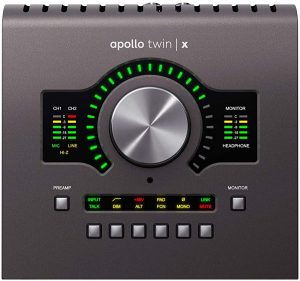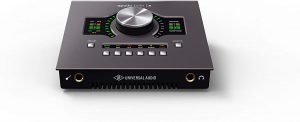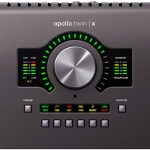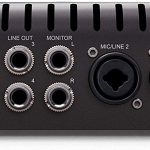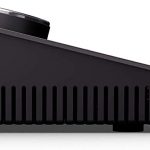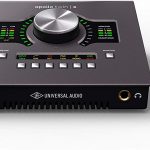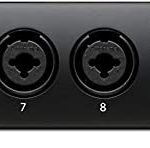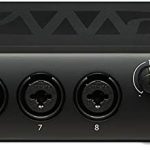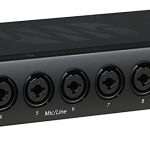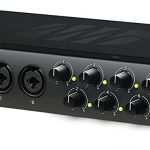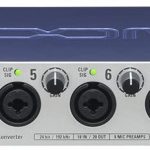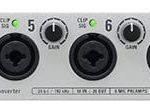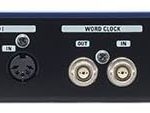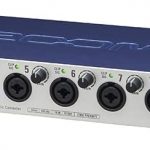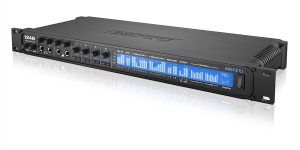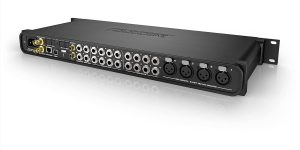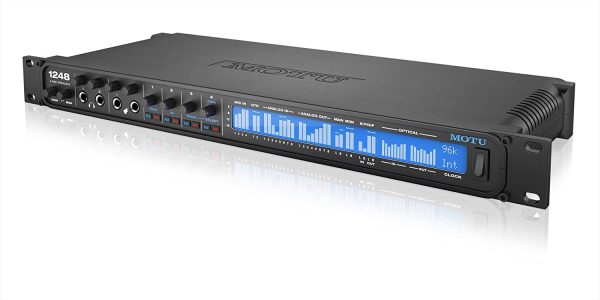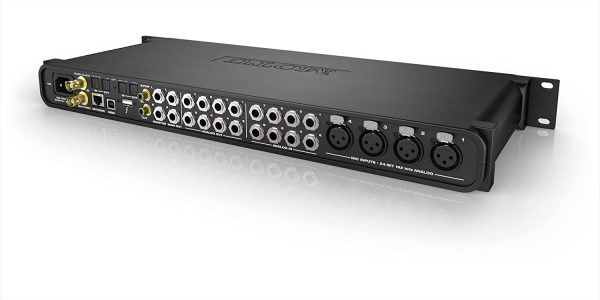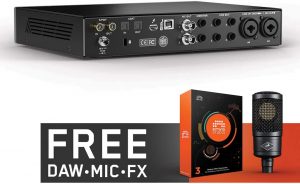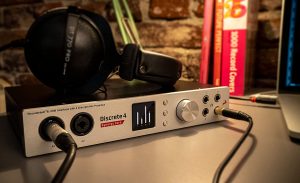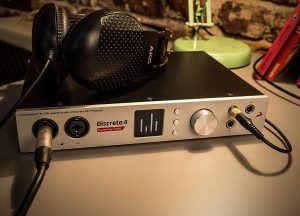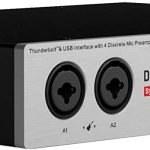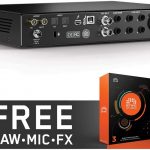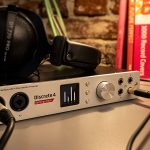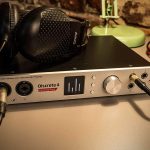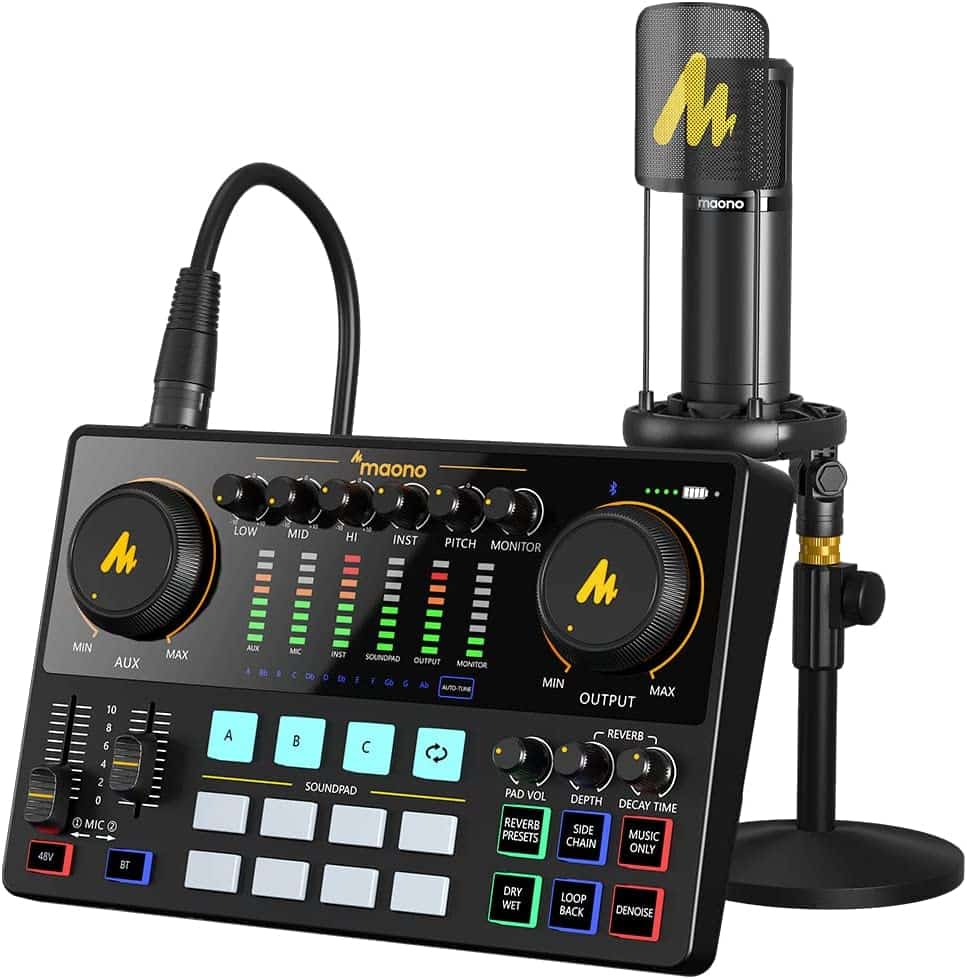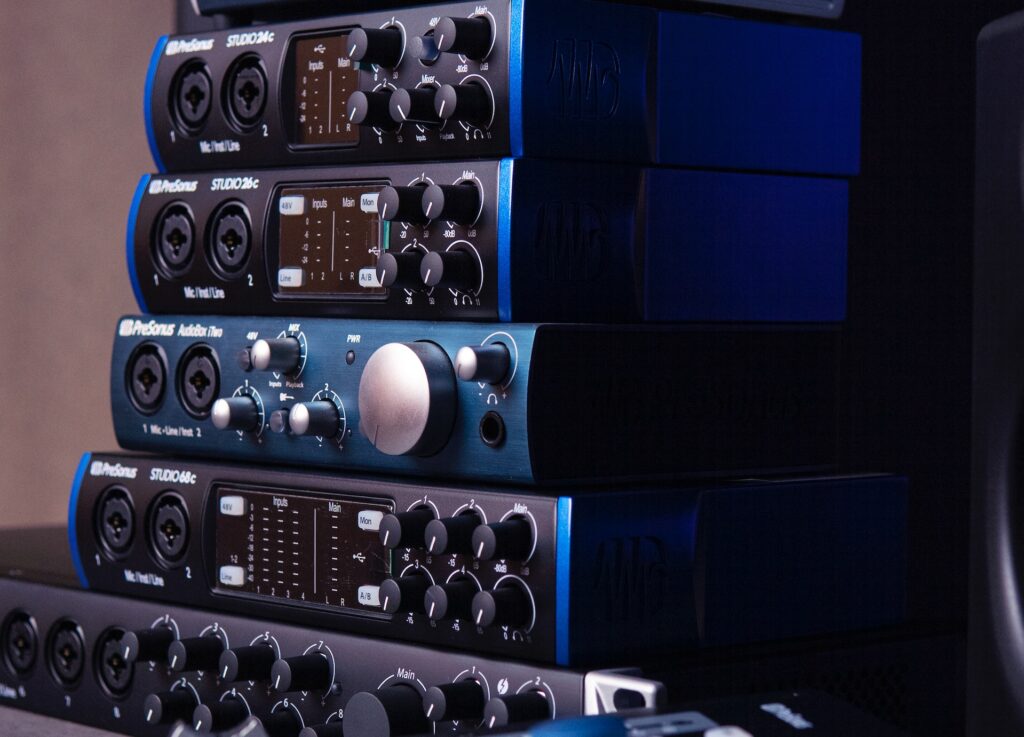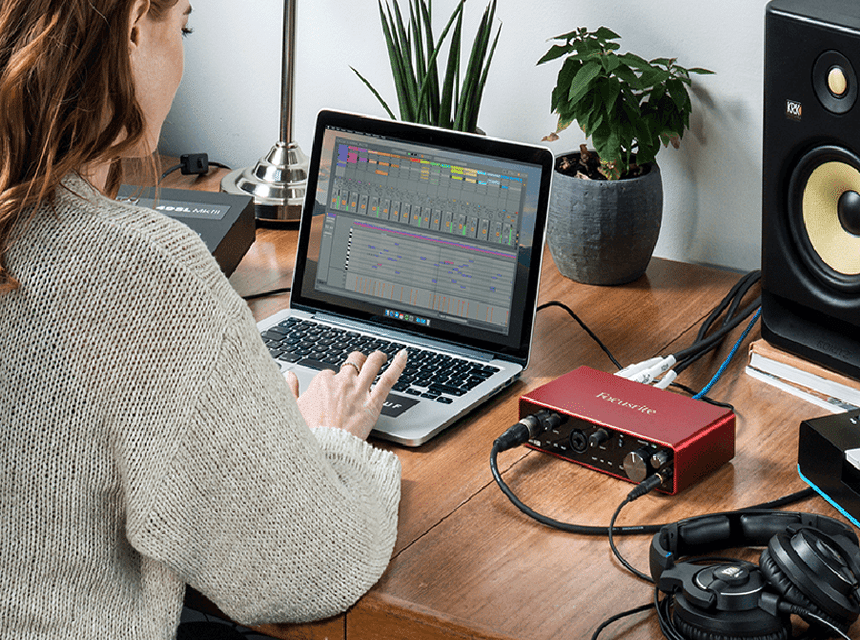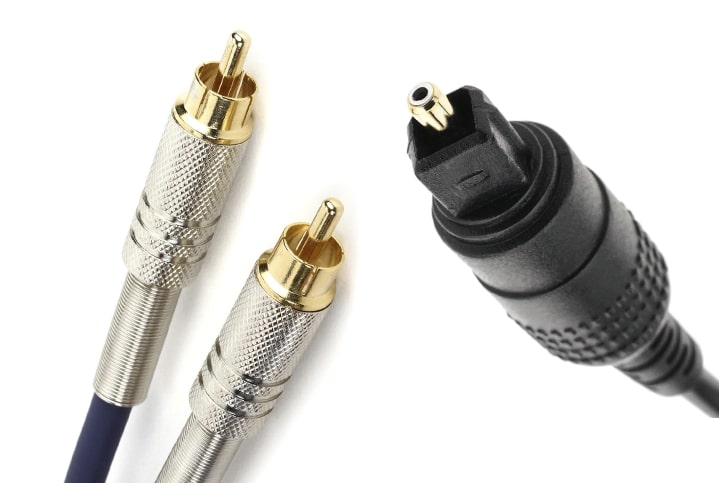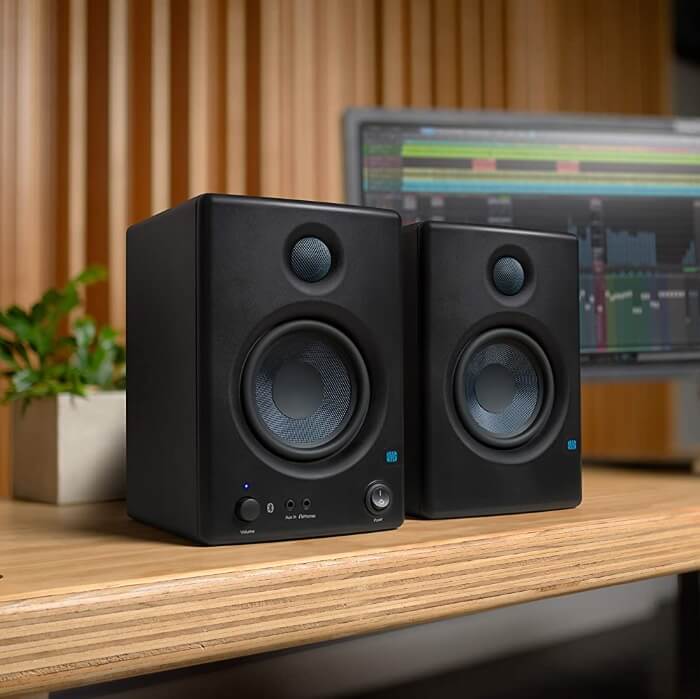What is Thunderbolt and why to choose it?
An important point that you should pay attention to before buying a suitable audio interface is first of all its compatibility with the operating system of the device with which you want to use it. In other words: does the selected audio interface model even match the operating system of your computer?
In 2011, the Thunderbolt format, developed jointly by Apple and Intel, followed, which was able to offer an enormous increase in performance to 10 Gbit/s.
Thunderbolt offers the fastest connection of all interfaces. It allows a transfer rate between 10 and 40 Gb per second depending on the version (1, 2, or 3), (against 400 to 800Mb per second for Firewire and USB 2.0). Ideal for its low latency and stability, this type of interface is only present on Apple computers since 2012 and a few rare PCs.
Thunderbolt is of course good, but mostly only found or supported on Apple computers – and they are significantly more expensive to purchase, just like the Thunderbolt interfaces themselves. The cables alone are expensive, from the Thunderbolt 2 to 3 adapters that may be required (USB-C) and the other way around quite apart from that. This quickly adds up to $30 to 100 or more for cables alone, which in the middle class should be better plugged into the interface itself than into the peripherals.
Thunderbolt also has real advantages. It is closer to the hardware and creates significantly higher bandwidths and also a slightly better latency, but this in turn only becomes noticeable with interfaces with many channels and you won’t find them in this category. Thunderbolt is also bitter when it comes to hot plugging, so it can happen now and then that you have to restart the computer if the computer has lost the connection – rather uncool on stage. But there is also a great advantage: Thunderbolt can transmit significantly more current. And thus high-quality, small interfaces do not require an additional power supply. And that’s cool, not just when you’re on the road a lot. The best example here is the Thunderbolt version of the Universal Audio Apollo Twin X.
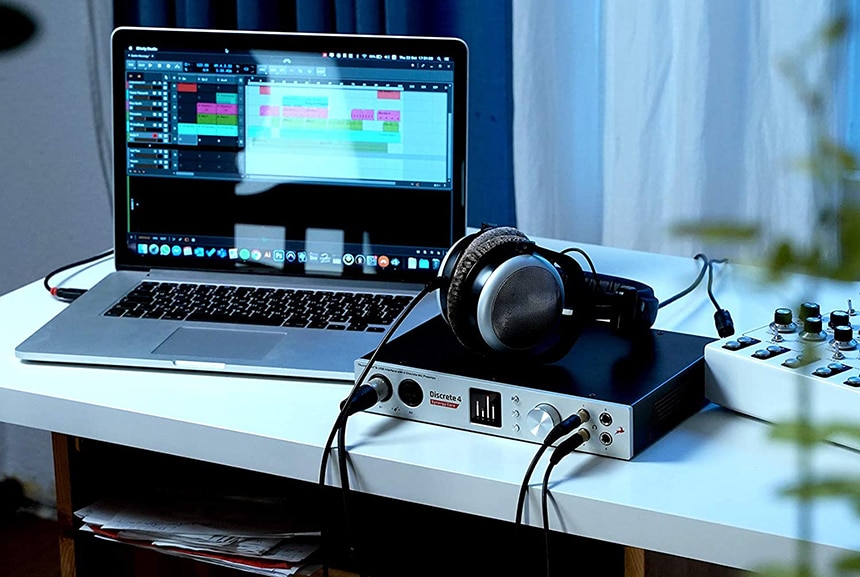
What to look for when buying Thunderbolt audio interfaces
After we have received an overview of everything worth knowing about all the individual components of Thunderbolt audio interfaces and their functionality, we come next to the topic of equipment, quality, and price differences in an in-depth review of criteria to watch out for.
Form factor
The housing material of audio interfaces for most devices is made of aluminum, steel, or metal. Few devices are made of plastic. What you prefer in this case is a matter of taste or depends on the manufacturer.
These devices are generally designed to be placed on a rackmount or used as a desktop as you can find with the
Antelope Audio Discrete 4. It all depends on your needs.
Inputs and outputs
After the form factor, has been clarified, the next question arises as to your effective need for simultaneously usable inputs and outputs. If you are, for example, a dance and pop music producer or a singer-songwriter on the road, the lion’s share of sounds comes from the computer.
The only sound sources that can be recorded by a microphone are first and foremost vocals, followed by acoustic or electric guitar, piano and hardware synthesizers, or the like.
In other words: Accordingly, in these fields of activity, you usually need a maximum of two channels at the same time including microphone preamps for recording in mono or stereo – depending on the instrument.
If, on the other hand, you want to record complete bands including drums at the same time, there should be at least eight or more inputs on the audio interface. The drums alone tend to devour at least four or more input channels, which is why even large audio interfaces with ten inputs reach their limits depending on the size of the formation.
If, for example, with even larger ensembles such as orchestras, big bands, etc., more inputs are needed, the whole thing must be expanded accordingly.
On the one hand, this can be done via the usually existing ADAT interface using an additional converter, and it’s usually eight additional inputs.
On the other hand, the vast majority of devices offer the option of expansion by connecting a second, third, or even fourth audio interface and thus using so-called cascading, i.e. a series connection of several compatible devices to achieve the required number of channels.
It looks the same on the outputs side if several signals are to be played out of the DAW at the same time. This can, for example, be for summing in an analog mixer, or an extra summing mixer for a fatter sound, or many independent headphones mixes at the same time.
Depending on the size of your recordings in terms of inputs and outputs, you always have to factor in enough inputs and outputs as well as any expansion options in your budget.
The more the interface should have in store and the higher the quality should be, the higher the price that can be expected, of course. Therefore, it makes sense, before buying, to think carefully and intensively how many inputs and outputs you really need and in any case for what purpose.
Mic preamps
Whenever you want to record with microphones, you automatically need a microphone preamp.
That’s why you need at least one preamp as a home recorder. The electrical signal emitted by the microphone is initially much too quiet and too weak to be sufficient for great-sounding recordings.
Therefore, a microphone preamplifier is always needed. First, it amplifies the microphone signal sufficiently and brings it to what is known as the working line level.
For the microphone preamplifier built into an audio interface, the basic requirement is that they should work tonally as neutrally as possible, or without discoloration and noise.
This means that the audio interface can be used universally in terms of sound. If additional preamp sound coloring is desired, external preamplifiers can first be used – in a classic way.
However, this also costs a lot of money. Alternatively, some audio interfaces, such as the Apollo Twin X QUAD from Universal Audio with its patented Unison preamp technology, also offer built-in sound coloring options.
If you want to have a “fat” vintage sound rich in overtones, we recommend external microphone preamps in particular. This can be integrated into your audio software in combination with an AD / DA converter.
On phantom power, 48 volts is an extra supply voltage that condenser microphones need to function at all. Therefore: If a condenser microphone is connected to a microphone preamplifier, the 48-volt phantom power must be activated so that the microphone emits a signal.
A little digression: In principle, there are two different types of microphones, namely dynamic microphones and condenser microphones. The easiest way to explain how it all works is by using dynamic microphones. These work on the moving coil or ribbon principle, similar to a bicycle dynamo.
So when the sound waves hit the microphone membrane, it moves an induction coil, and that in turn generates a very small alternating voltage. Therefore, an extra microphone preamplifier is needed to provide the very high amplification power, especially with ribbon mics, that is required to bring the weak output signal to an adequate working level.
In contrast to this, capacitor mics deliver somewhat louder output signals than dynamic mics, not least thanks to their different construction principles. However, a microphone preamplifier is also required here, not only to achieve the line-level necessary for usable recordings but also to provide the operating voltage required for condenser mics.
A microphone preamp therefore always has a switch for said supply voltage, which runs at a standardized 48 volts and is referred to as what is known as phantom voltage. The name derives from the fact that this supply current is generally not used to operate additional built-in amplifier circuits, but only to function the microphone capsule built in the form of a capacitor.
Performance
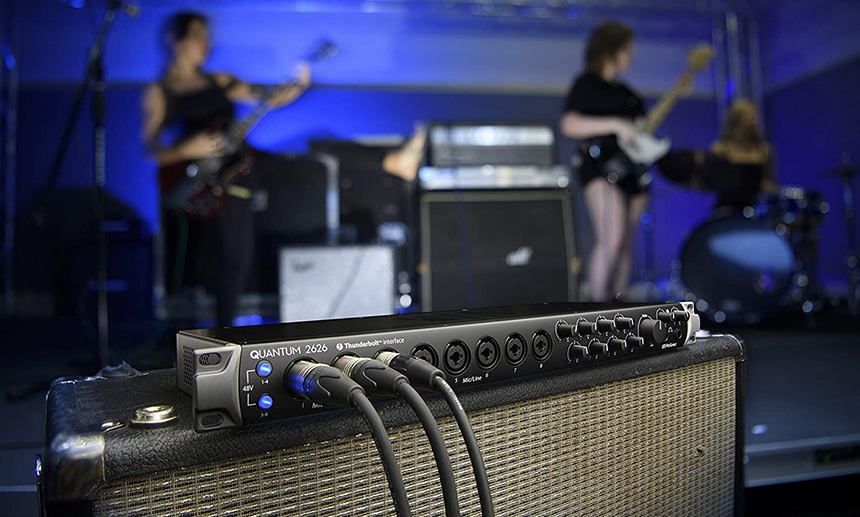
With the interfaces we have selected in this article, you shouldn’t have a problem with sound performance. If you’re looking at other models, keep an eye out for reviews complaining about sound quality issues, including preamp hiss. Indeed, non-professional interfaces sometimes have average quality preamps. If they are pushed a little hard to compensate for a weak audio signal, they may “blow” – that is, produce unwanted interference.
OS
Of course, a thunderbolt audio interface must be compatible with your computer, regardless of whether it is an Apple or Mac computer. Most of the devices in our audio interface review are compatible with both iOS and macOS. But pay attention to the age of the operating system: Many models are not compatible with older versions.
The audio interface software supplied varies from device to device. While some audio interface models come with around three programs and tools, particularly versatile products have a significantly larger range of programs, tools, and samples. So compare, for example, the products of Universal Audio and other brands and find the best device for you.
Sync sources
When it comes to sync sources, you have, for example, Word Clock, with the PreSonus Quantum 2626 and the Zoom TAC-8. But the Apollo Twin X QUAD combines sync sources such as ADAT, Internal, S/PDIF. But, DAT, Internal, S/PDIF, and Word Clock, what are they?
ADAT is still cheaper for the time being than an extension via an additional interface instance – albeit with a slight catch. The audio resolution is limited due to the format. That means: If all eight available ADAT input and output paths are to be used simultaneously, a maximum resolution of 48 kHz/ 24 bit is only possible. There is a small consolation, however, because nowadays ADAT interfaces have an additional data transmission extension called S/MUX, which also enables higher sample rates – but only when the number of available channels is reduced. In S/MUX mode, you can choose between a maximum of four channels at a time at a sample rate of 96 kHz or just two channels at a time at 192 kHz.
If, on the other hand, you want to record consistently in the highest resolution on all available channels at the same time, you cannot avoid cascading with additional audio interfaces. This usually costs more money than an ADAT converter. In terms of recording quality and convenience, however, the unrestricted, full channel power of the entire interface network is available. Apart from the cost-effective system expansion, another advantage of the ADAT interface is the loss-free, digital data transmission via optical fiber optic cable.
The highlight: The data stream from and to the connected peripheral device does not have to be converted again into an analog and then back into a digital signal, which could result in sound changes. Instead, everything remains in a completely digital form of zeros and ones, something which the optical fiber optic cable shipment does not change.
The S/PDIF interface also works completely digitally, but at this point mostly via chinch or RCA cable. This comes from the consumer or home cinema area, where data is usually transmitted via optical TOSLINK transmission. This transmits a stereo signal, i.e. two channels at the same time, like ADAT in S/MUX mode with a maximum of 192 kHz and 24-bit word length. The difference to ADAT is that only two channels are transmitted, but in high quality per se, and the data transmission, as already mentioned, is usually not done optically but via a cinch or RCA cable connection. Possible areas of application are high-quality mono or stereo recordings, such as stereo recordings from a digital mixer or the use of a high-end AD/DA converter as well as completely digital signal forwarding to S/PDIF-capable studio monitors. So if you want to prefer the specially tailored converters in your studio speakers with S / PDIF interface to AD / DA converters in your audio interface, you can use the lossless digital data transmission.
After ADAT and S/PDIF, last but not least, we come to the third digital interface in the form of word clock inputs and output. If available on the respective audio interface model, they are available in the form of so-called BNC sockets. This time, however, these do not transmit audio signals. But they transmit to a global clock signal, the so-called word clock, for synchronizing the digital sampling rate in a network of several digital devices.
Storage requirements
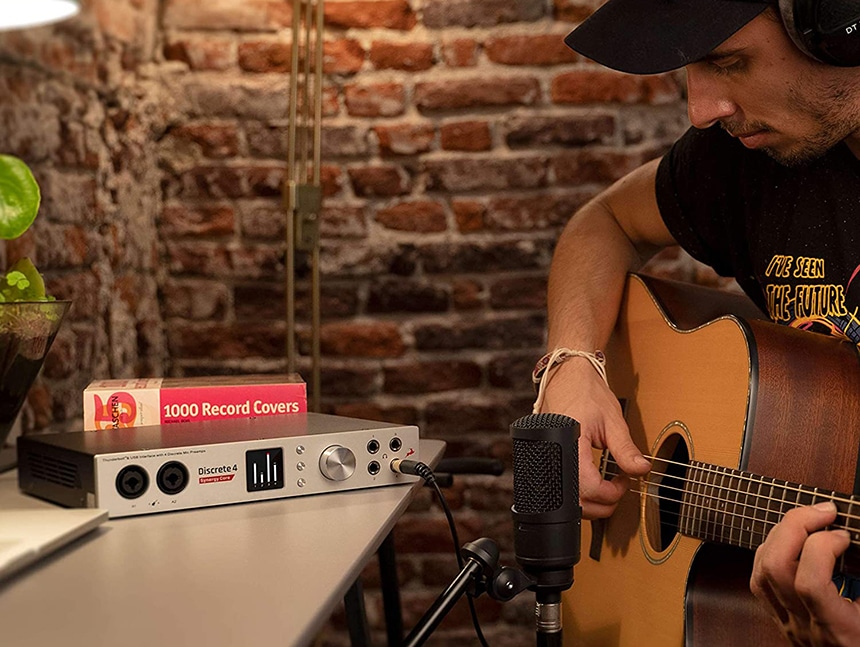
The storage requirements for thunderbolt audio interfaces differ. While the PreSonus Quantum 2626 requires a 30-gigabyte storage requirement, the Antelope Audio Discrete 4 requires only 10 gigabytes. In any case, 8 gigabytes is a sweet spot. However, 4 gigabytes can also run your software smoothly with no lags and without overworking the computer. But you’ll need a drive space.
Prices
Naturally, the higher your budget, the more diversified your choice will be. However, to start in the world of the home studio, nothing prevents you from choosing an entry-level model. However, be sure to choose models from reliable and recognized brands (Focusrite, Steinberg, Behringer, Universal Audio, RME, etc.). Thus, you will have more chances to have a quality tool. If you want a top quality thunderbolt audio interface like the Apollo Twin X QUAD, be ready for a budget of around $1,300 to $1,500 in all. However, a budget pick like the Zoom TAC-8 can be acquired for half that price range.







